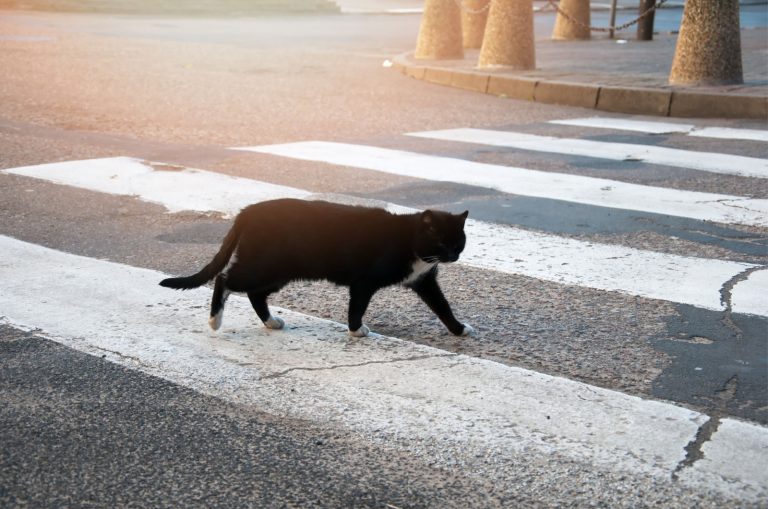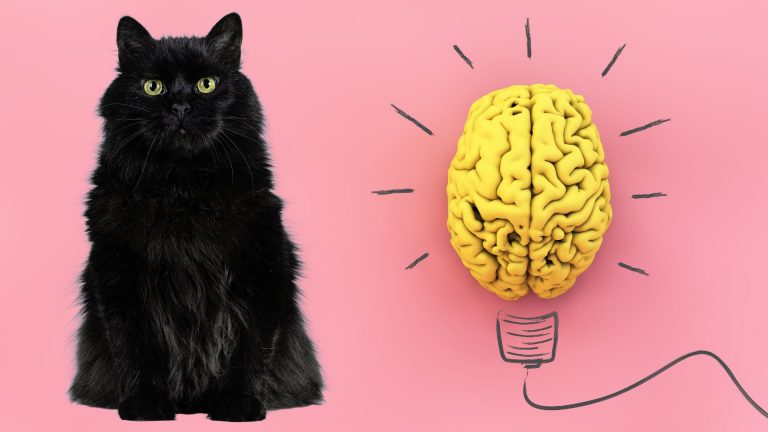9 Potential Causes Of White Cat Poop – Tips On What To Do
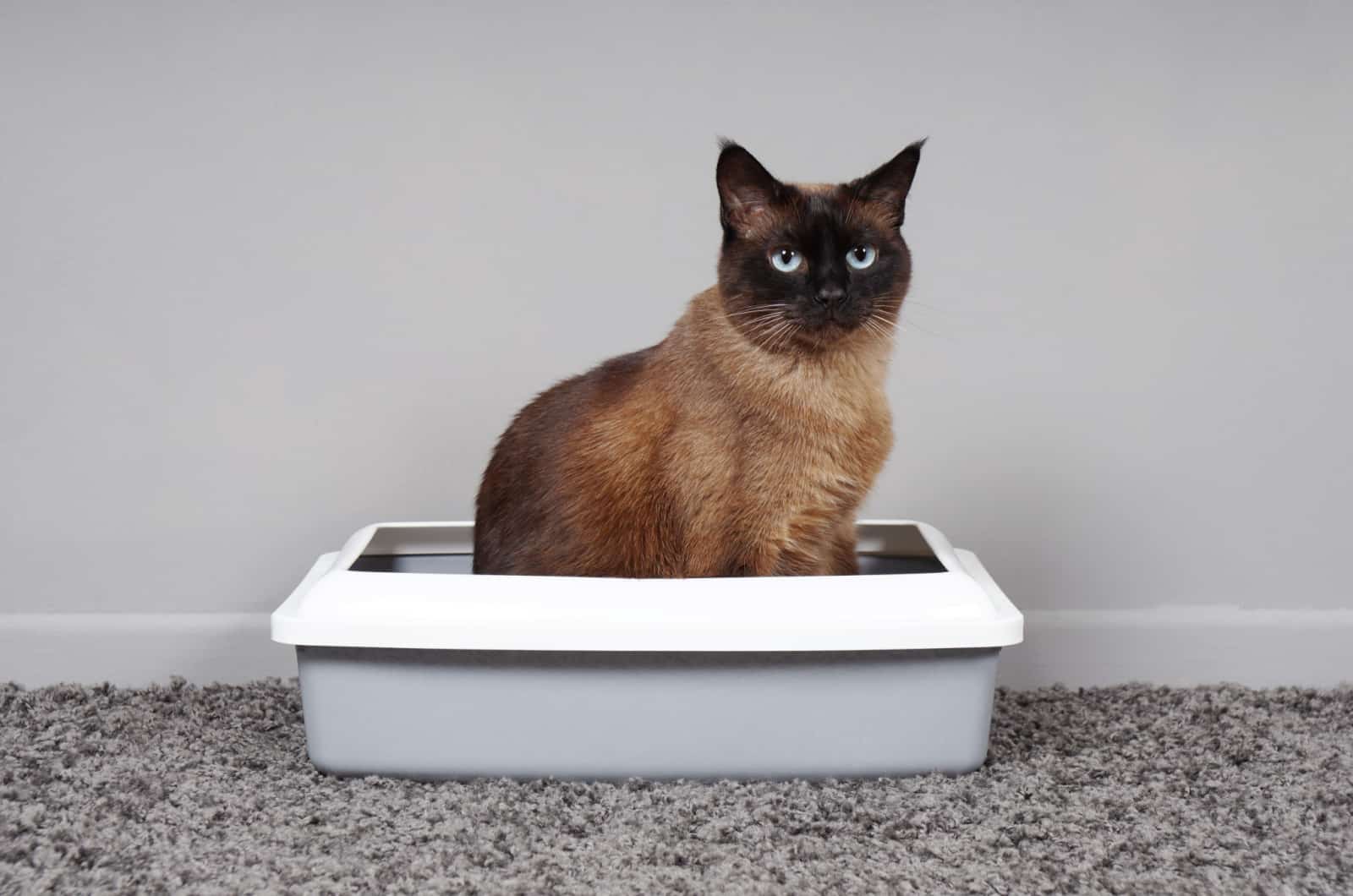
Cat owners, here we are again, talking about a… less than pleasant topic, but a very important one. It seems like there is always something to talk about when it comes to cat poop, because cat poop changes are valuable indicators of a cat’s health.
If eyes are the window to the soul, then cat poop is the window to a cat’s gastrointestinal health!
As we all know, the regular color of cat poop is brown, but sometimes, cat poop can be a different color, which can be alarming.
If you notice your cat’s poop is white, you will be wondering what white cat poop means, what caused it, and how do you resolve it?!
Don’t worry, I’ve got you covered. In this article, I will list and explain the potential causes of white cat poop, how the causes are treated, when you should worry, when to take your pet to the vet, and what healthy vs unhealthy cat poop looks like.
Is White Cat Poop Normal?
You probably already know the answer to this – no, white cat poop is not considered “normal”. Normal cat poop is brown and all other colors indicate something out of the ordinary is happening in your cat’s body.
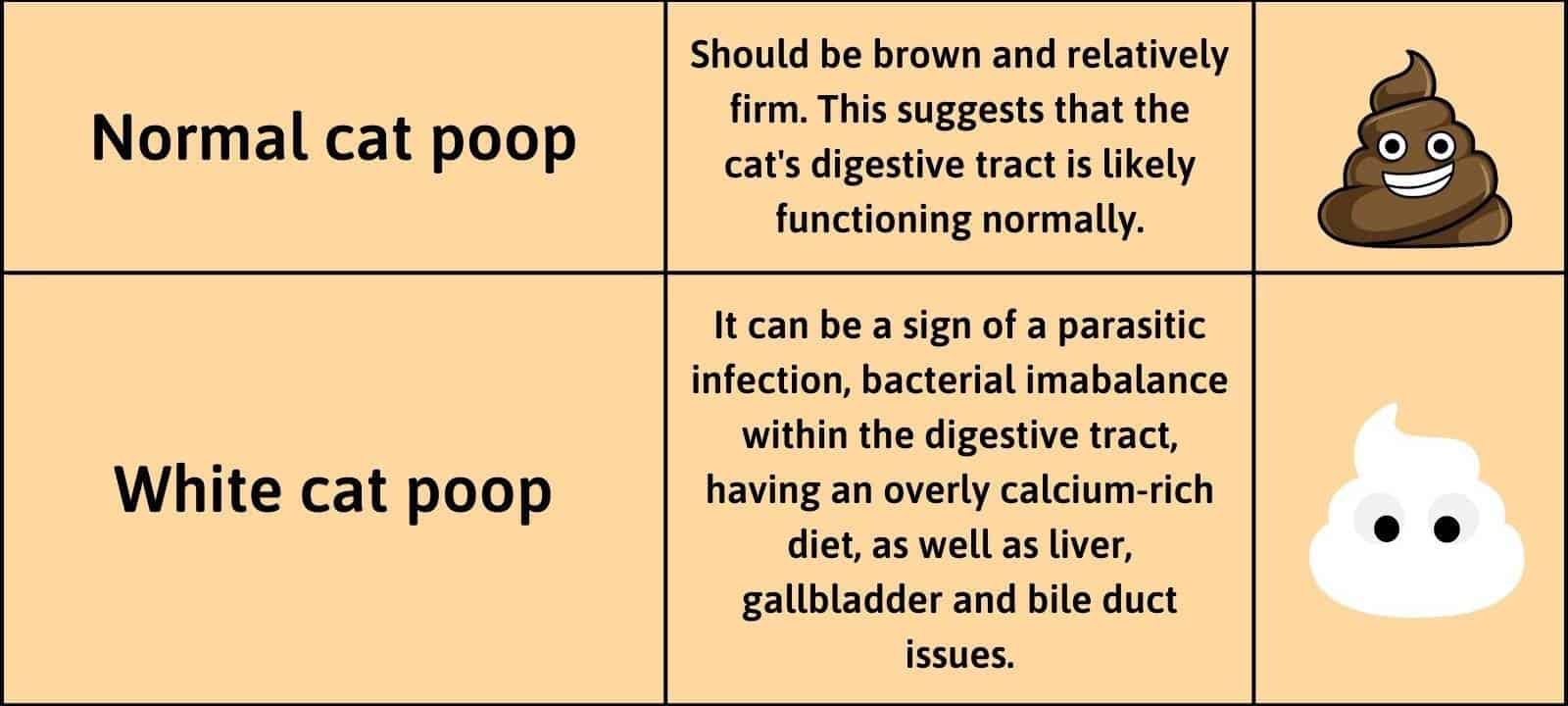
When talking about white cat poop, you may observe either:
• Entirely white cat poop
• Cat poop with white spots
White poop in cats is not frequently observed, but it’s definitely possible. Now, let’s go into the causes of white poop in cats, and later on, I will explain how these causes are treated and prevented.
Why Is My Cat’s Poop White? 9 Potential Causes Explained

Let’s go over all the potential causes of white cat poop and whether they’re a serious threat to your cat’s health or not.
1. Roundworms
One of the most prevalent intestinal parasites in cats is the roundworm. At some point in their lives, almost all cats will contract roundworms, most frequently when they are kittens.
Cats of all ages, including kittens, may contract this disease by ingesting eggs containing infectious roundworm larvae.
Although roundworms are not extremely dangerous to adult cats, they can pose a serious threat to the lives of young kittens and elderly cats who are already weak or who have other health problems.
Symptoms of roundworm infection include:
• Vomiting
• Diarrhea
• Loss of appetite
• Weight loss
• Pot Bellied appearance
• Adult roundworms in cat’s feces or vomit
If you see white flecks in your cat’s poop, as well as these symptoms, it is highly likely your cat has roundworms. In roundworm infection, you will only see white spots in cat poop, not the entire poop being white.
Therefore, if your cat’s poop is entirely white, it’s safe to say roundworm infection is not what’s causing your kitty’s white poo.
2. Tapeworms
Apart from roundworms, tapeworms are another type of intestinal parasites that cause harm to felines. Long, flat, white worms called tapeworms attach to the wall of your cat’s small intestine.
Tapeworms can infect cats in a number of ways. The most typical method involves fleas. Tapeworms can be present in even the tiniest flea larvae.
A flea that is infected can pass on a tapeworm to your cat (when the cat eats the flea, for example, while grooming) and the tapeworm will then develop into an adult worm.
They are regarded as a minor parasite by vets. That’s because they probably won’t cause your pet any permanent harm. However, tapeworm infection does have symptoms.
An infected cat might experience some of the following symptoms:
• Poor coat condition
• Vomiting
• Mild diarrhea
• Intestinal blockage
• Dragging their bottom across the floor/ground (due to itching)
Additionally, a tapeworm can split into smaller pieces (called proglottids) that eventually end up in your cat’s feces. You can find them in your cat’s excrement or attached to the fur just under their tail. They will resemble dry white rice, or chunks of cream.
Related: Should I Quarantine My Cat With Tapeworms? Find Out NOW!
3. Too Much Calcium
This might come as a surprise, but a diet rich in calcium is one of the most common causes of white poop for both cats and dogs.
The poop of cats who eat a lot of bones is frequently white. Although there is a never-ending debate about whether cats should eat bones or not, many cat owners chose to give their cats raw chicken bones.
Raw chicken bones are safe and healthy for cats as they’re a source of calcium and collagen and are good for the cat’s dental health.
Nevertheless, there is a limit – a cat’s diet should not consist of a daily intake of chicken bones.
For cats, excessive calcium causing white poop is not typically a cause for alarm, although it can lead to constipation. It is time to visit the vet if you notice your cat struggling to use the litter box.
4. Bacterial Imbalance Within The GI Tract
Every cat’s gastrointestinal tract (GI tract) contains bacteria that live there, forming a community known as microbiome.
The rich bacterial population within a domestic cats’ GI tract has a direct impact on its health. In fact, the same applies to people too! Our gut microbiome is extremely important for our health.
Similar to humans, a variety of health issues in cats (and dogs) are linked to changes in the type of bacteria in the stomach.
Your cat’s excrement may be white if they don’t have enough healthy gut bacteria.
If you suspect a bacterial imbalance within your cat’s GI tract is what’s causing their poop to be white, you should go visit the vet. Your cat’s health and digestion will suffer without a healthy gut flora.
5. Fungal Toxicosis
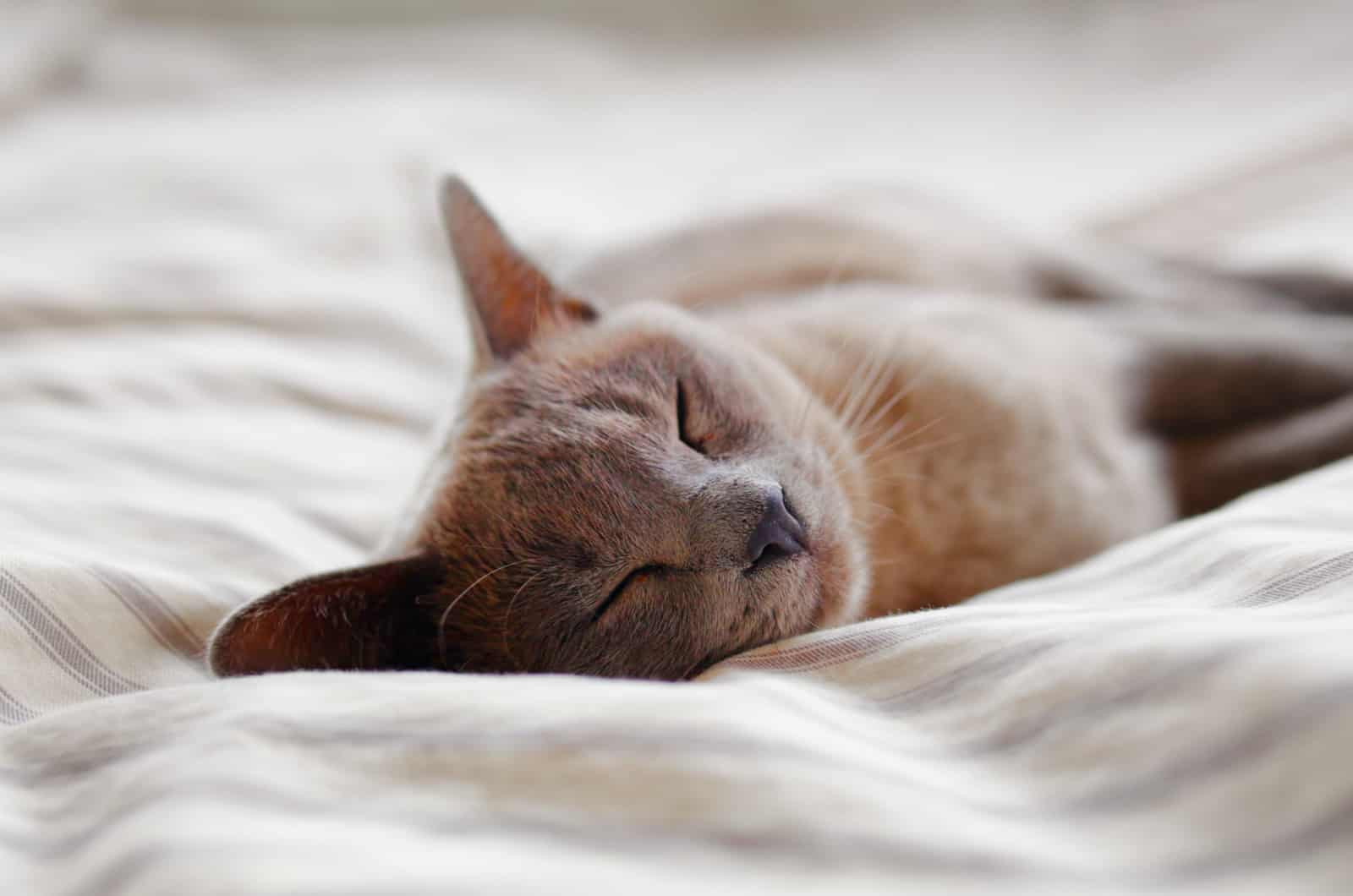
It is possible that your cat has fungal toxicosis if you observe white mold in the cat’s feces.
A condition known as fungus toxicosis is brought on by molds and fungi that produce poisons which harm cats. Mycotoxins, which harm a cat’s internal systems and organs, are produced when fungus or spores enter its body, typically through inhalation or ingestion.
Symptoms of fungal toxicosis are:
• Lack of appetite and weight loss
• Vomiting and diarrhea
• Dehydration
• Abdominal bloating
• Difficulty breathing
• Weakness
• Fever
Cats who have fungal toxicosis need to see a vet. Moderate to severe symptoms are expected, but fungal toxicosis can bring about some more severe symptoms, and in the worst cases it may have a deadly outcome.
6. Intestinal Coccidia
Almost all cats will have Coccidia at some point in their lives. These are single-celled (protozoan) parasites. The parasite enters the cat’s intestinal lining cells, where it develops and subsequently ruptures the cells, harming the cat’s intestines.
Disease (coccidiosis) develops more often in older cats and in young kittens with weaker immune systems.
The most common symptoms of coccidiosis include:
• Diarrhea
• Weight loss
• Dehydration
• Loss of energy
The parasite coccidia is frequently linked to a white-gray, pasty diarrhea. When coccidia is present, diarrhea may occasionally be white or, more frequently, yellow.
7. Liver, Gallbladder Or Bile Duct Issues
Pure white or extremely pale cat feces indicate that your cat may be experiencing problems with their liver, gallbladder, or bile production.
Extremely pale stools can also be an indication that your cat’s digestive tract is underproducing bile. Lack of bile causes the stool to have a consistency similar to clay.
Bile is a digestive fluid produced and secreted by the liver and stored in the gallbladder for later use. Digestion is aided by bile fluid – it transforms lipids into fatty acids that the digestive system can absorb.
A cat with pale or white excrement may have gallbladder or liver disease, or even have a blocked bile duct. There are many different signs that a cat is suffering from these health issues.
Lethargy, anorexia (lack of appetite), weight loss, weakness, jaundice, vomiting, and diarrhea are a few shared symptoms of all the mentioned issues.
8. Changes In Diet
Changes in a cat’s diet could also be causing your cat’s white stool.
Let’s say your cat won’t eat wet food, and you’ve tried switching to an all-dry food diet; or your kitty stopped eating food from one brand, and you’ve switched to another one – all of these drastic changes cause abnormal stool color.
This is especially true if you’ve switched to a high-mineral diet or a raw food diet that has too much calcium. In this case, you might observe that your cat has white, chalky excrement that falls apart very quickly.
9. It’s Just Mold
If you’ve noticed your cat’s poop is white, it is possible you’ve seen a normal cat poop that turned white due to environmental conditions.
If you’ve ever wondered Does cat poop turn white when it dries, here’s the answer – yes, it is possible for old cat poop to become white!
When your kitty does a poo, the stool initially appears healthy and normal but gradually turns white. This may be because natural colors degrade in the sunlight or because mold grows more readily in damp areas.
If you observe this, it does not necessarily indicate that your cat is experiencing any health issues.
If your cat’s poop is not white when fresh, but gradually develops white color over a few days, it is most likely turning color as a result of the environment as it starts to deteriorate.
Why Is My Kitten’s Poop White?

A kitten’s poop can be white for the same reasons as an adult cat’s poop may be white. If we leave out the causative agent being eating too many bones (as we all know, kittens should not have bones), all other reasons are possible.
Kittens can get roundworms and tapeworms, which results in white specks in their poop.
They can also have fungal toxicosis, imbalance of the gastrointestinal bacteria, coccidiosis (which is actually quite common in kittens), liver, gallbladder, or bile problems, which can all result in white poop.
Sudden changes in diet can disrupt normal digestion, resulting in pale-colored poop, as well as poop simply being out in the open for too long so that mold began growing on it and turned the surface of it white.
Why Does The Color Of My Cat’s Poop Matter?
Every pet owner must keep track of what’s going in and what’s coming out of their pet. Why? Keeping track of what they’re eating ensures they’re eating healthily, and keeping track of their poop is a good indicator if they’re indeed healthy.
The color, texture, and smell of cat poop tells you a lot about a cat’s health. The same goes for cat’s urine. Considering that cats cannot tell us themselves that they’re unwell, their poop and pee can.
Cat poop smelling bad, having an odd color, or being too liquid or too firm (or cat poop being half firm half soft) are signs something is going on with your kitty’s health.
White cat poop might be an indicator that your cat’s overall health state needs a quick vet checkup.
What About White Mucus On Cat’s Poop?
If you notice white mucus on your cat’s stool, do not be alarmed. White mucus is a product of the intestinal tract that facilitates easy fecal passage. Essentially, it helps lubricate the lining of the intestinal tract.
This white mucus, which can occasionally be visible on the excrement, is there to aid in the transit of feces. However, excessive amounts of mucus or mucus that has an odd color may indicate a problem.
Should I Be Worried If My Cat Has White Poop?
If you know your cat’s white poop is not simply caused by mold after sitting out too long, you should visit the vet. Cat poop is white due to a number of potential causes, and many of them need veterinary treatment.
Therefore, if you notice white cat poop in litter box, go to the vet’s office, and find out if your cat has a disease, worms, a bile duct obstruction or a fungal or protozoan infection!
How Are The Causes Of White Cat Poop Treated?
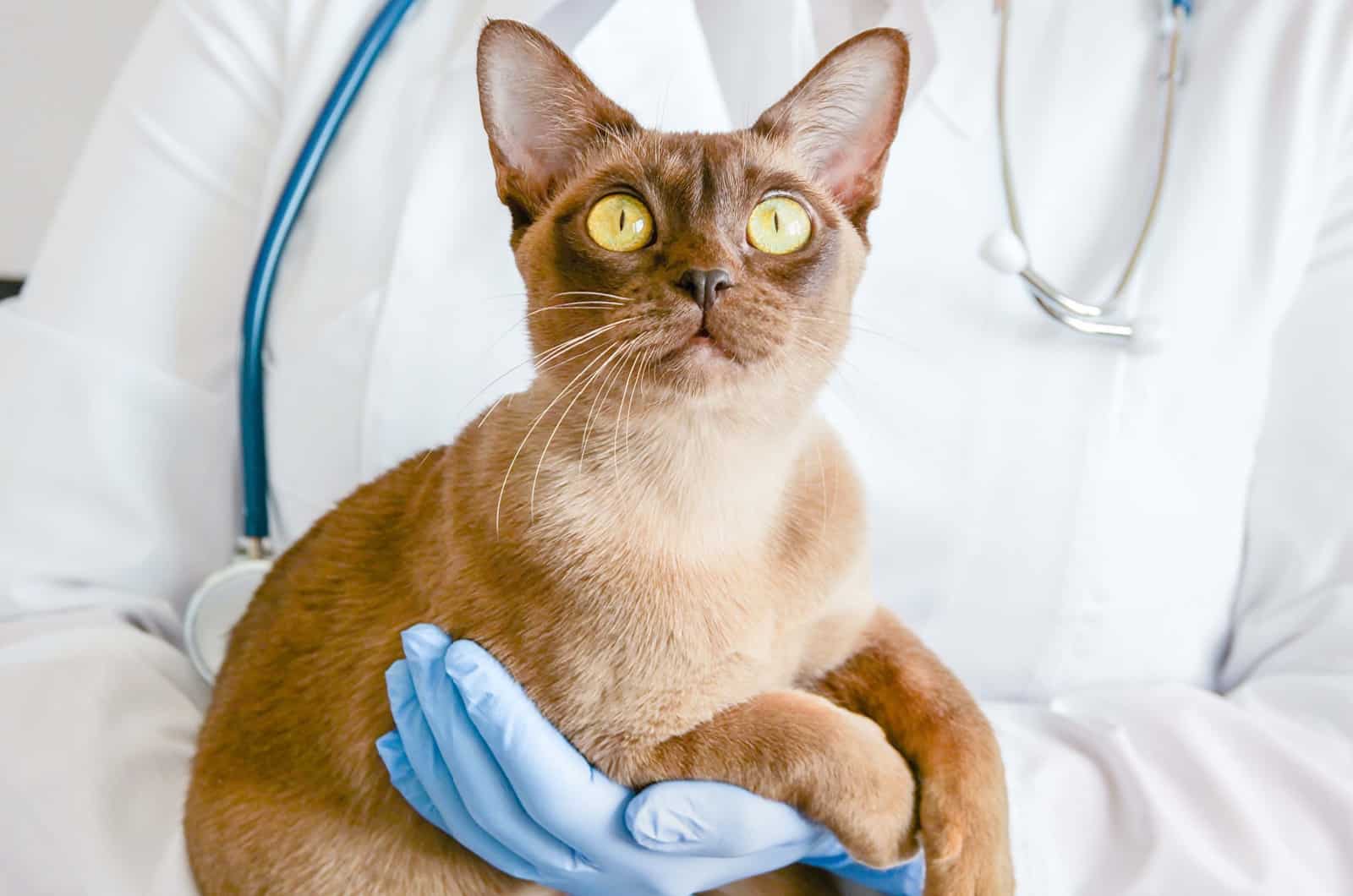
If the cause of your kitty’s white stool has been established, your vet will prescribe a treatment plan you should follow.
Briefly, I will go over what treatment you can expect, based on the cause of your cat’s white poop.
1. Roundworms Treatment
There are numerous treatments for roundworm in cats, as this is a relatively common issue that most cat owners encounter. The best treatment option for your cat will be decided by your veterinarian.
The most common treatment is deworming medication, typically given to a cat orally. Several rounds of deworming medication might be needed.
2. Tapeworms Treatment
Fortunately, cat tapeworms are quite simple to treat. Your veterinarian will most likely prescribe a dewormer, specifically a tapeworm medication. Dewormers can also be administered intravenously, but they are typically taken orally.
The tapeworm in the intestines dissolves as a result of the deworming treatment. You shouldn’t see any traces of the worms in the litter box.
Negative side effects from the deworming treatment, such as nausea or diarrhea, are very rare. You can also try some home deworming for cats options.
Now you’re probably wondering My cat has worms, how do I clean my house? and let me tell you – you’ll have a lot of work to do…
Related: How Long After Deworming A Cat Are The Worms Gone – Find Out Now!
3. Treating Too Much Calcium In The Diet
There is really no treatment for too much calcium in the diet, apart from changing the diet.
If you notice your cat is having pale-colored poop and suspect it’s because you’ve been giving them more raw chicken bones than you should, then reduce the amount of bones you give your cat.
4. Treating Bacterial Imbalance Within The Digestive Tract
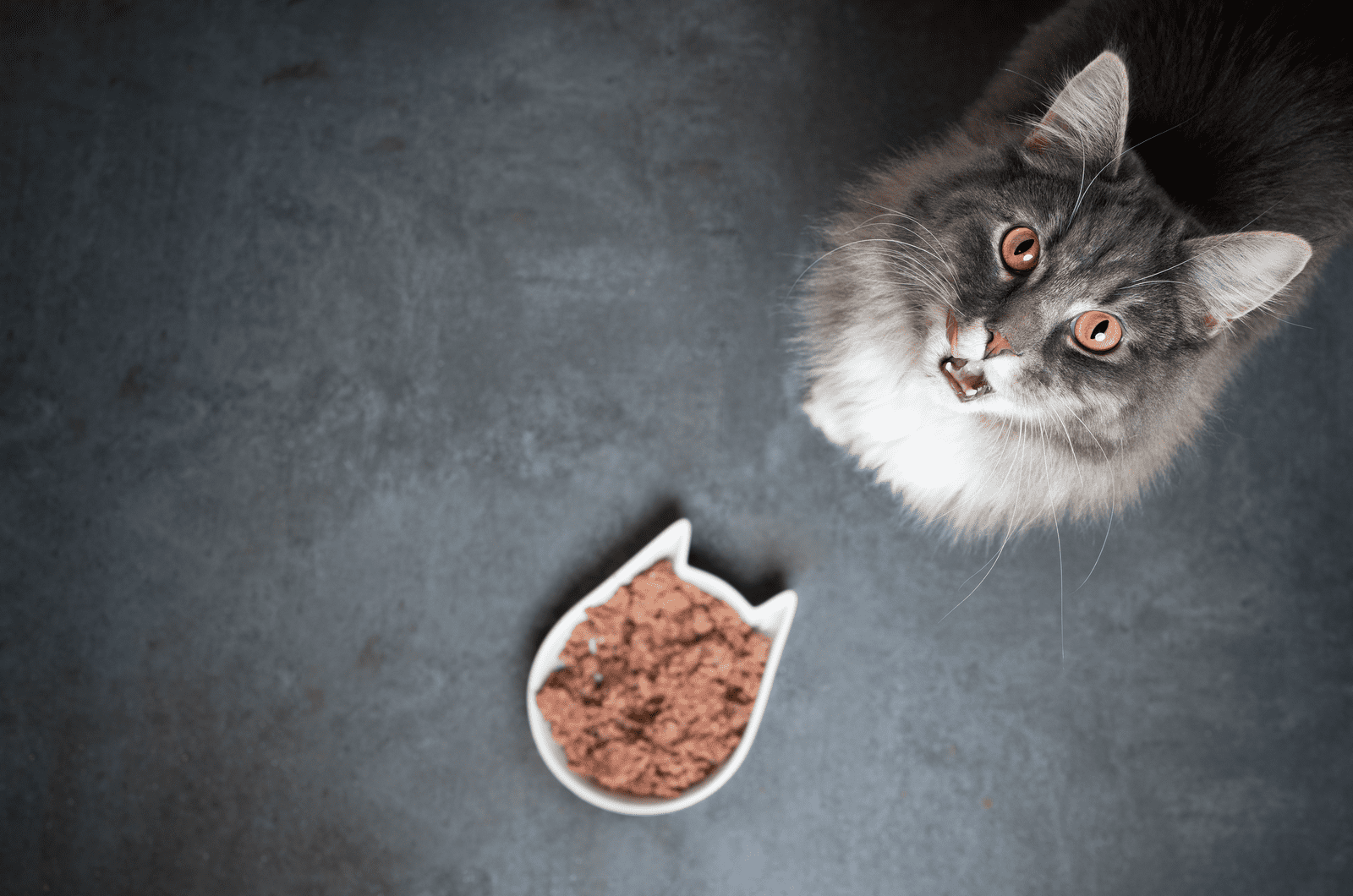
The best thing to treat a bacterial imbalance is make sure your cat’s diet is healthy!
Due to the fact that cats must eat meat, the optimal diet for most cats is one that is high in protein and low in carbohydrates.
You can also give your cat prebiotics and probiotics to feed their microbiome.
Prebiotics are unique types of dietary fiber that support the development of good gut bacteria. Even though many foods already include these components naturally, you can always add additional prebiotics.
Probiotics, which are beneficial microorganisms that support digestion and general health, can be added to your cat’s diet as a supplement.
These live microorganisms are thought to aid in the treatment or prevention of a wide range of ailments and disorders, particularly those affecting the digestive system.
5. Fungal Toxicosis Treatment
Treatments for fungal toxicosis vary depending on the kind of fungus, how it entered the cat’s system, and the symptoms.
Possible treatments involve topical or oral antifungal medications, IV fluid treatment, and symptomatic treatment.
Foods and bedding contaminated with mold should be thrown away.
The prognosis for recovery is typically good if fungal toxicosis is treated quickly and future exposure is avoided.
6. Intestinal Coccidia Treatment
Cats who have coccidia are often treated with an oral antibiotic drug.
Antimicrobial therapy is frequently paired with drugs to reduce symptoms, such as probiotics, reduced residue foods, anti-nausea drugs, and fluid therapy, depending on the severity of the cat’s disease.
Drugs to treat coccidiosis should be used under a veterinarian’s supervision and no home remedies are recommended to be used.
7. Treating Liver, Gallbladder, Pancreas Or Bile Duct Issues
Treatment of these issues should be discussed with the vet, as treatment depends on the organ in question and what the exact issue is.
8. Treatment Problems Caused By Dietary Changes
If dietary changes caused your cat’s gastrointestinal upset, vomiting, diarrhea, and abnormal colored poop (white poop), then you need to adjust your cat’s diet once again.
To avoid causing digestive discomfort and diarrhea, gradually switch over to a new cat food over the course of a week or two.
The key is switching foods gradually rather than suddenly. If you want to introduce new food items to your kitty’s diet, do it slowly.
The vet can also recommend the best diet for your cat’s breed, age, and activity level. For example, if you have a Persian cat, a vet will recommend the best cat food for Persian cats.
Related: Best Cat Food For Older Cats That Vomit: Top 18 Choices (2023)
9. “Treatment” For Moldy Cat Poop
The “treatment” here is simple – clean cat poop away regularly, as you cannot stop mold from forming – it’s all around us!
How Do I Prevent My Cat From Having White Poop?

The only thing better than the successful treatment of an issue is the successful prevention of the issue. Therefore, you might want to learn how to prevent your cat developing the issues that result in them having white stool!
Roundworms Prevention
Although you can’t completely prevent your cat from being exposed to roundworms, there are many ways to reduce the risk of an infestation occurring. Worming remedies can be taken as tablets or spot-on treatments.
Depending on you, your cat, your lifestyle, even the season, the optimum parasite regimen for your cat will vary. Your veterinarian may assist you in determining which regime will be most effective for your pet.
However you decide to treat your cat’s worms, be careful to consult a veterinarian about the most effective anti-parasitics available, as many over-the-counter medications are ineffective.
Tapeworms Prevention
Controlling fleas is the best strategy to avoid tapeworms in cats. By keeping your cat flea-free, you can prevent the possibility that they might unintentionally eat a flea that is tapeworm-infected.
You can treat fleas and ticks on your cat with regular medication.
Vaccinating your cat against fleas while it is a kitten is highly recommended. By deworming your kitten, you can reduce the possibility that they will develop tapeworms and other parasites as they age.
Prevention Of Bacterial Imbalance Within The Digestive Tract
In order to prevent your cat developing an imbalance within the gut microbiome, make sure to:
• Provide them with a healthy diet, high in proteins
• Give antibiotics only as prescribed
• Read medication side-effects as they can warn you about possible imbalanced microbiota, so you can monitor your pet
In fact, you can apply the same advice to yourself! Make sure to eat healthy, don’t overuse medication, and take your antibiotics only when needed and on time!
Fungal Toxicosis And Intestinal Coccidia Prevention
There really isn’t a lot you can do, apart from making sure your and your cat’s environment is clean.
Thoroughly clean the cat’s living space to ensure that any potential fungal or mold growth sources are gone.
Make sure to also clean your cat’s litter box regularly.
Coccidia may survive for months in the environment, even in carpeting, during some life stages. Therefore, if you know one of your cats is infected or was infected, give your house a very thorough cleaning!
Preventing Liver, Gallbladder, Pancreas, Or Bile Duct Issues
In order to keep your cat healthy, you need to make sure their diet is healthy (full of protein, with low amounts of fat and carbs), and ensure that they get enough physical exercise, as well as enough mental stimulation.
Preventing Moldy White Cat Poop
How can moldy white cat poop be avoided? Clean your cat’s litter box promptly to avoid mold growth!
What Does Healthy Cat Poop Even Look Like?
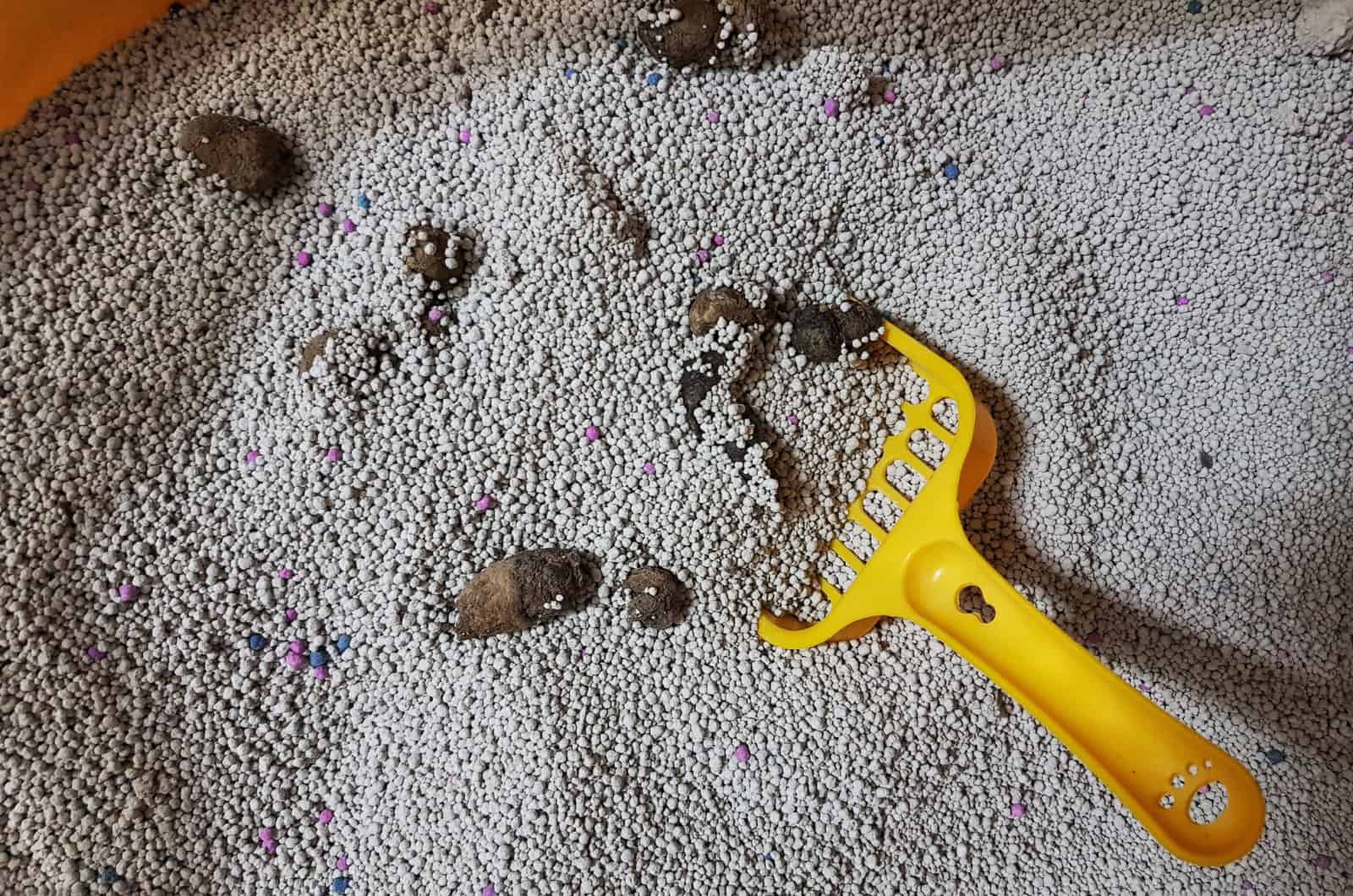
A healthy cat’s poop is firm (but not too firm) and is brown (shades can range from medium brown to dark brown, but a darker shade is optional).
Firm, dark brown cat’s poo indicates that the cat’s body is digesting the majority of the food he consumes and just excreting a small amount of leftover waste, as it should.
What Does Unhealthy Cat Poop Look Like?
A brief bout of food poisoning or a change in diet may cause a soft stool without any blood or mucus visible. If the problem persists, it can be a sign of an intestinal parasite.
Feces that appear dark and oily may indicate that your pet is eating too much fat. Such a diet can lead to pancreatitis, an inflammation of the pancreas that can be minor or life-threatening.
Typically, a black, tarry stool suggests that there is bleeding somewhere in the digestive system of the animal. It could be an indication of GI tract damage or it could be a sign of a very serious illness, like cancer.
Watery diarrhea, where you notice your cat leaking brown fluid, especially in kittens, can quickly result in dehydration and be an indication of stress, a viral illness (such as parvovirus), or other types of parasite infection.
Feed your pet small, frequent meals and encourage fluid intake if they are experiencing diarrhea.
A mucus-covered or mucus-containing soft stool may be a sign of a bacterial or viral infection or the presence of another parasite. A stool test may be advised by your veterinarian to confirm the infection.
In Conclusion
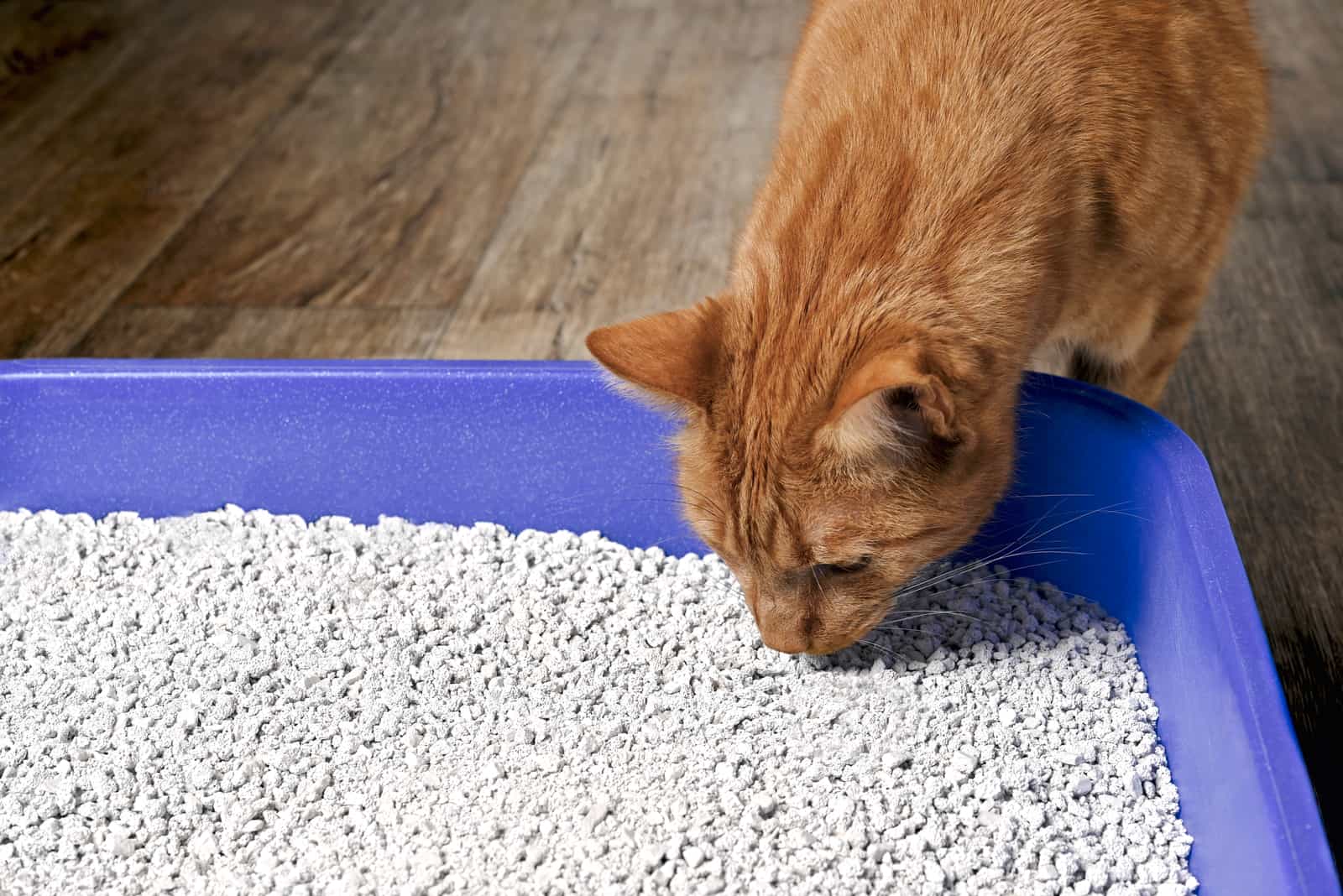
Your cat’s stool is an extremely valuable indicator of your feline friend’s overall health. Any abnormalities in the stool’s texture, color, or smell are potential clues your cat is dealing with health issues.
White cat poop is definitely not out of the ordinary, and can be caused by:
• Roundworms
• Tapeworms
• Too much calcium in diet
• Bowel infection
• Bacterial imbalance within the digestive tract
• Fungal toxicosis
• Intestinal coccidia
• Liver problems
• Obstructed bile duct
• Changes in diet
• Mold from sitting out for too long
As you can see, some causes won’t need veterinary care and can be resolved by the owner himself, but others will need professional help.
If you notice additional symptoms like vomiting, diarrhea, abdominal pain, weight loss, or a lack of appetite, you might be dealing with a more serious condition. White cat poop may result from problems with the liver, pancreas, gallbladder, or intestines. Therefore, visiting the vet is the right thing to do.
I’m sure your feline friend will be perfectly fine, just get a quick vet checkup to reassure you and catch any potential problems early.
Like this post? Share or pin it for later!




